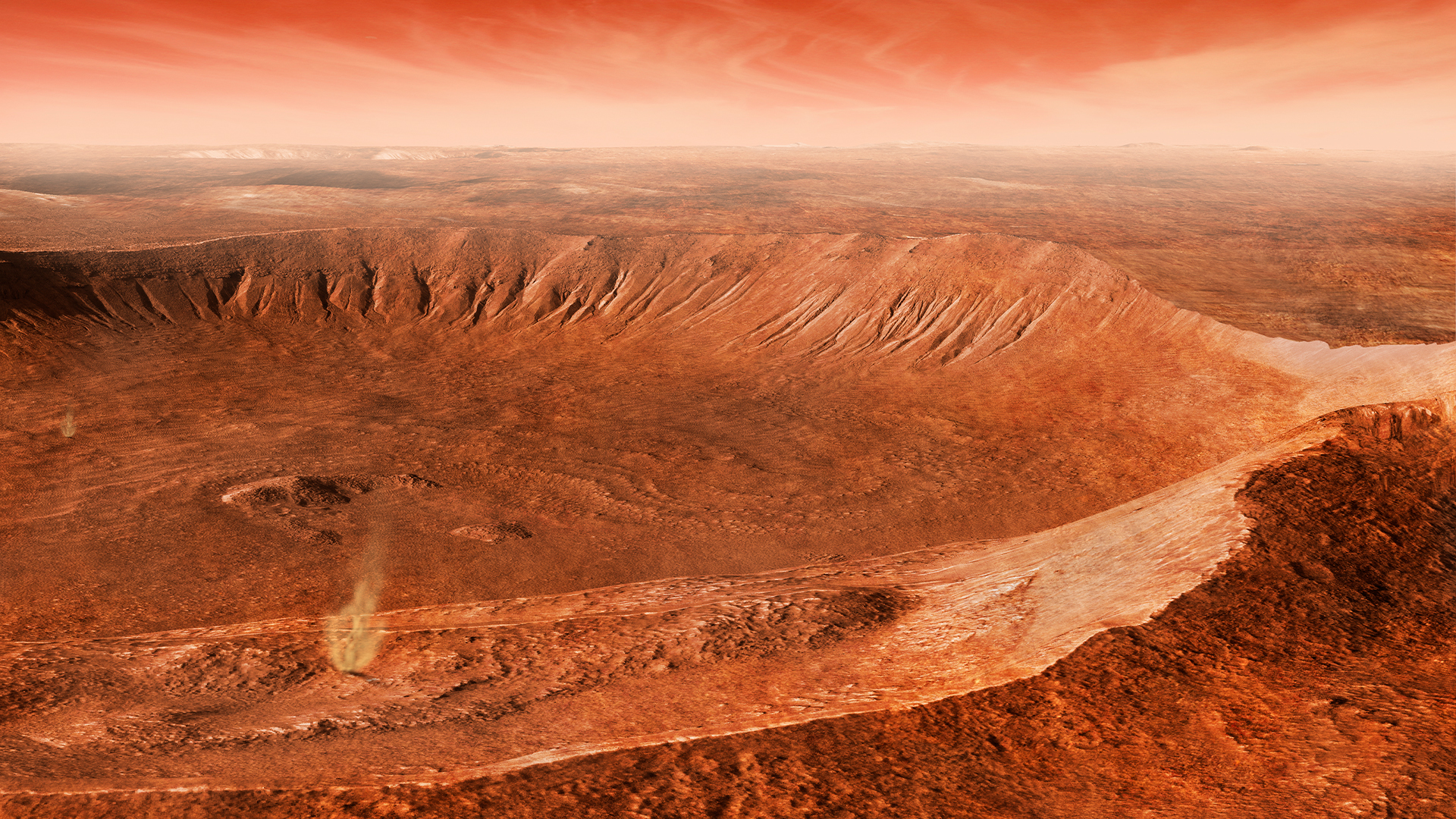Aliens may be hitching rides on meteors to colonize the cosmos, study suggests. Here's how we could spot them.
A fringe theory called "panspermia" suggests that lifeforms can spread to new planets by hitching rides on meteors. New research lays out a roadmap for finding where these hypothetical, planet-hopping aliens may reside.

If life is capable of spreading from planet to planet — a concept known as "panspermia" — then we might be able to detect it, even if we don't know what we're looking for, new research suggests.
Astronomers are on the hunt for life beyond Earth. While there are several promising locations within the solar system, the sheer abundance of exoplanets means that we are most likely to find life on a planet orbiting another star. There are more than 5,000 confirmed exoplanets to date, according to NASA — and that number is always rising.
But these searches for extraterrestrial life currently face one major roadblock: we don't know exactly what we're looking for. We only know of one kind of planet that is definitely capable of hosting life, and we only know of one kind of life — that is, Earth, and the carbon-based life that is found here. But life may, say astronomers, take an astonishing number of forms throughout the galaxy. While we might get extremely lucky and find an exact replica of Earth with the exact same kind of life, we are more likely to face fuzzy, unclear, nuanced situations that will take many years to unravel.
A pair of astronomers recently proposed an alternative to this approach, focusing less on what life would look like and more on what life would do. Specifically, they propose a detection strategy based on the concept of panspermia, the idea that life can start on one planet and spread to others by hitching rides on meteorites.
Related: What's the best evidence we've found for alien life?
While panspermia lies outside the mainstream of scientific research, it's not outright pseudo-science either. Martian meteorites have been found on Earth, and scientists are routinely surprised by the hardiness of living creatures and the extreme environments that they can survive in.
One of the key characteristics of any kind of life is its ability to change a planet's natural balance. On Earth, for example, we have far more oxygen in our atmosphere than we would were life not present, and distant observers would notice much more green on our landmasses than there would be otherwise.
Get the world’s most fascinating discoveries delivered straight to your inbox.
We don't know exactly what properties of an exoplanet that alien life would change — but, if that life is capable of panspermia, then it would attempt to make those same changes on every planet it came across as it spread from world to world. Sometimes it would fail, if the conditions weren't right to allow that life to thrive — but sometimes it would succeed, making the new planet similar to its original world. Then that new planet would serve as a starting point for a new round of panspermia.
In their new study, the researchers devised a statistical test where, if we measure enough properties of enough planets, then we can potentially identify a cluster of nearby planets that share similar characteristics. Since these planets, each one orbiting a distant star, would have no other reason to be similar to each other, this cluster would stand out from the collection of all exoplanets.
Such a discovery wouldn't be a smoking gun for identifying life, but it would be a major clue that something strange was happening to those planets — and that the cause just might be life propagating among the stars.
The researchers acknowledged that their work has limitations. Firstly, it assumes that panspermia is possible, which is an untested hypothesis. Secondly, their technique only works if we can collect enough data about a large number of exoplanets. But the advantage of their technique is that it's "agnostic," meaning that it can identify a potential signature of life without any bigger assumptions about how that life works.
The team's research was published in March to the preprint database arXiv, and has not yet been peer reviewed.

Paul M. Sutter is a research professor in astrophysics at SUNY Stony Brook University and the Flatiron Institute in New York City. He regularly appears on TV and podcasts, including "Ask a Spaceman." He is the author of two books, "Your Place in the Universe" and "How to Die in Space," and is a regular contributor to Space.com, Live Science, and more. Paul received his PhD in Physics from the University of Illinois at Urbana-Champaign in 2011, and spent three years at the Paris Institute of Astrophysics, followed by a research fellowship in Trieste, Italy.


